Country
Operator Image

Crash of an Airbus A320-111 on Mt Sainte-Odile: 87 killed
Date & Time:
Jan 20, 1992 at 1920 LT
Registration:
F-GGED
Survivors:
Yes
Schedule:
Lyon - Strasbourg
MSN:
15
YOM:
1988
Flight number:
IT148
Crew on board:
6
Crew fatalities:
Pax on board:
90
Pax fatalities:
Other fatalities:
Total fatalities:
87
Captain / Total hours on type:
162.00
Copilot / Total hours on type:
61
Aircraft flight hours:
6316
Aircraft flight cycles:
7194
Circumstances:
On 20 January 1992, an Airbus A320 registered F-GGED and operated by the company Air Inter, made the scheduled connection by night between Lyon-Satolas and Strasbourg-Entzheim using the call sign ITF 148 DA. The aircraft took off from Lyon at approx. 17.20 hours with 90 passengers, 2 flight crew members and 4 cabin crew members on board. No problems were reported by the crew during the course of the flight. The runway in operation at Strasbourg-Entzheim was 05. After listening to the ATIS announcements, the crew planned to carry out an ILS approach procedure for runway 23, followed by visual manoeuvres for a landing on runway 05. Before transferring the aircraft to Strasbourg Approach Control, the Centre Régional de la Navigation Aérienne (CRNA) Est (Eastern Regional Air Navigation Centre) in Reims cleared it to descend to Flight Level 70 near the ANDLO way point. At 18.09 hours contact was established with Strasbourg Approach Control. While the aircraft was crossing Flight Level 150 in descent its distance to STR VOR was around 22 nautical miles. Strasbourg Control cleared it to continue its descent to an altitude of 5,000 feet QNH, then, after announcing that it had passed ANDLO, cleared it to a VOR-DME approach to runway 05. However, the altitude and speed of the aircraft were such that the direct approach procedure could no longer be carried out and the crew informed Control of their intention to carry out an ILS Rwy 23 approach procedure followed by visual manoeuvres for runway 05. Control warned them that this choice would mean a delay, as three aircraft were in the process of taking off from runway 05, using an IFR flight plan. The crew then modified their strategy and advised Control that they would carry out a complete VOR-DME procedure for runway 05. Control then suggested radar guidance to bring them back to ANDLO, thus curtailing the approach procedure. The aircraft was a few seconds away from STR VOR. The crew accepted and carried out the manoeuvres prescribed by the controller: left turn towards heading 230 for an outbound track parallel to the approach axis, then a reciprocal turn towards the ANDLO point. At 18.19 hours the Controller informed the crew that the aircraft was abeam the ANDLO way point and cleared them to final approach. The aircraft then commenced its descent, approximately at the distance allowed for the approach procedure, i.e. 11 nautical miles from STR VOR. Thirty seconds later the Controller requested the crew to call back passing STR. The crew acknowledged. This was the last contact with the aircraft. The wreckage was discovered at 22.35 hours, on a slope of Mont "La Bloss" at a topographical level close to 800 metres (2,620 feet), at a distance approximately 0.8 nautical miles (1,500 m) to the left of the approach path and 10.5 nautical miles (19.5 km) from the runway threshold. Five crew members and 82 passengers were killed while 9 other occupants, including one crew members, were rescued.
Probable cause:
After analysing the accident mechanisms, the commission reach the following conclusions:
1 - The crew was late in modifying its approach strategy due to ambiguities in communication with air traffic control. They then let the controller guide them and relaxed their attention, particularly concerning their aircraft position awareness, and did not sufficiently anticipated preparing the aircraft configuration for landing.
2 - In this situation, and because the controller's radar guidance did not place the aircraft in a position which allowed the pilot flying to align it before ANDLO, the crew was faced with a sudden workload peak in making necessary lateral corrections, preparing the aircraft configuration and initiating the descent.
3 - The key event in the accident sequence was the start of aircraft descent at the distance required by the procedure but at an abnormally high vertical speed (3300 feet/min) instead of approx. 800 feet/min, and the crew failure to correct this abnormally high rate of descent.
4 - The investigation did not determined, with certainty, the reason for this excessively high rate of descent . Of all the possible explanations it examined, the commission selected the following as seen most worthy of wider investigation and further preventative actions:
4.1 - The rather probably assumptions of confusions in vertical modes (due either to the crew forgetting to change the trajectory reference or to incorrect execution of the change action) or of incorrect selection of the required value (for example, numerical value stipulated during briefing selected unintentionally).
4.2 - The highly unlikely possibility of a FCU failure (failure of the mode selection button or corruption of the target value the pilot selected on the FCU ahead of its use by the autopilot computer).
5 - Regardless of which of these possibilities short-listed by the commission is considered, the accident was made possible by the crew's lack of noticing that the resulting vertical trajectory was incorrect, this being indicated, in particular, by a vertical speed approximately four times higher than the correct value, an abnormal nose-down attitude and an increase in speed along the trajectory.
6 - The commission attributes this lack of perception by the crew to the following factors, mentioned in an order which in no way indicates priority:
6.1 - Below-average crew performance characterised by a significant lack of cross-checks and checks on the outputs of actions delegated to automated systems. This lack is particularly obvious by the failure to make a number of the announcements required by the operating manual and a lack of the height/range check called for as part of a VOR DME approach.
6.2 - An ambiance in which there was only minimum communication between crew members;
6.3 - The ergonomics of the vertical trajectory monitoring parameters display, adequate for normal situations but providing insufficient warning to a crew trapped in an erroneous mental representation;
6.4 - A late change to the approach strategy caused by ambiguity in crew-ATC communication;
6.5 - A relaxation of the crew's attention during radar guidance followed by an instantaneous peak workload which led them to concentrate on the horizontal position and the preparation of the aircraft configuration, delegating the vertical control entirely to the aircraft automatic systems;
6.6 - During the approach alignment phase, the focusing of both crew members attention on the horizontal navigation and their lack of monitoring of the autopilot controlled vertical trajectory;
6.7 - The absence of a GPWS and an appropriate doctrine for its use, which deprived the crew of a last chance of being warned of the gravity of the situation.
7 - Moreover, notwithstanding the possibility of a FCU failure, the commission considers that the ergonomic design of the autopilot vertical modes controls could have contributed to the creation of the accident situation . It believes the design tends to increase the probability of certain errors in use, particularly during a heavy workload.
1 - The crew was late in modifying its approach strategy due to ambiguities in communication with air traffic control. They then let the controller guide them and relaxed their attention, particularly concerning their aircraft position awareness, and did not sufficiently anticipated preparing the aircraft configuration for landing.
2 - In this situation, and because the controller's radar guidance did not place the aircraft in a position which allowed the pilot flying to align it before ANDLO, the crew was faced with a sudden workload peak in making necessary lateral corrections, preparing the aircraft configuration and initiating the descent.
3 - The key event in the accident sequence was the start of aircraft descent at the distance required by the procedure but at an abnormally high vertical speed (3300 feet/min) instead of approx. 800 feet/min, and the crew failure to correct this abnormally high rate of descent.
4 - The investigation did not determined, with certainty, the reason for this excessively high rate of descent . Of all the possible explanations it examined, the commission selected the following as seen most worthy of wider investigation and further preventative actions:
4.1 - The rather probably assumptions of confusions in vertical modes (due either to the crew forgetting to change the trajectory reference or to incorrect execution of the change action) or of incorrect selection of the required value (for example, numerical value stipulated during briefing selected unintentionally).
4.2 - The highly unlikely possibility of a FCU failure (failure of the mode selection button or corruption of the target value the pilot selected on the FCU ahead of its use by the autopilot computer).
5 - Regardless of which of these possibilities short-listed by the commission is considered, the accident was made possible by the crew's lack of noticing that the resulting vertical trajectory was incorrect, this being indicated, in particular, by a vertical speed approximately four times higher than the correct value, an abnormal nose-down attitude and an increase in speed along the trajectory.
6 - The commission attributes this lack of perception by the crew to the following factors, mentioned in an order which in no way indicates priority:
6.1 - Below-average crew performance characterised by a significant lack of cross-checks and checks on the outputs of actions delegated to automated systems. This lack is particularly obvious by the failure to make a number of the announcements required by the operating manual and a lack of the height/range check called for as part of a VOR DME approach.
6.2 - An ambiance in which there was only minimum communication between crew members;
6.3 - The ergonomics of the vertical trajectory monitoring parameters display, adequate for normal situations but providing insufficient warning to a crew trapped in an erroneous mental representation;
6.4 - A late change to the approach strategy caused by ambiguity in crew-ATC communication;
6.5 - A relaxation of the crew's attention during radar guidance followed by an instantaneous peak workload which led them to concentrate on the horizontal position and the preparation of the aircraft configuration, delegating the vertical control entirely to the aircraft automatic systems;
6.6 - During the approach alignment phase, the focusing of both crew members attention on the horizontal navigation and their lack of monitoring of the autopilot controlled vertical trajectory;
6.7 - The absence of a GPWS and an appropriate doctrine for its use, which deprived the crew of a last chance of being warned of the gravity of the situation.
7 - Moreover, notwithstanding the possibility of a FCU failure, the commission considers that the ergonomic design of the autopilot vertical modes controls could have contributed to the creation of the accident situation . It believes the design tends to increase the probability of certain errors in use, particularly during a heavy workload.
Final Report:



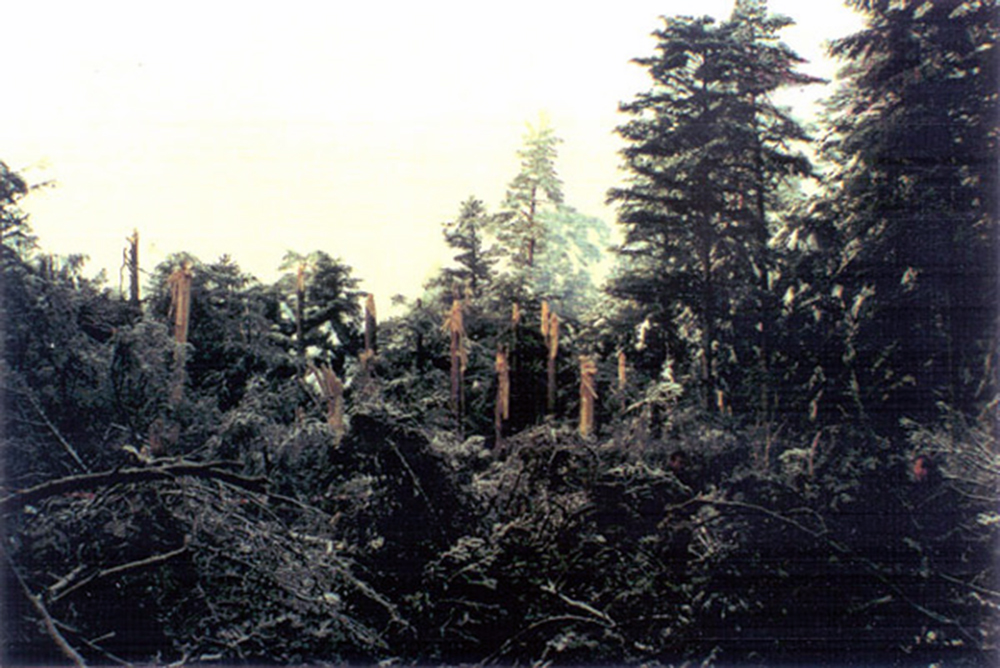






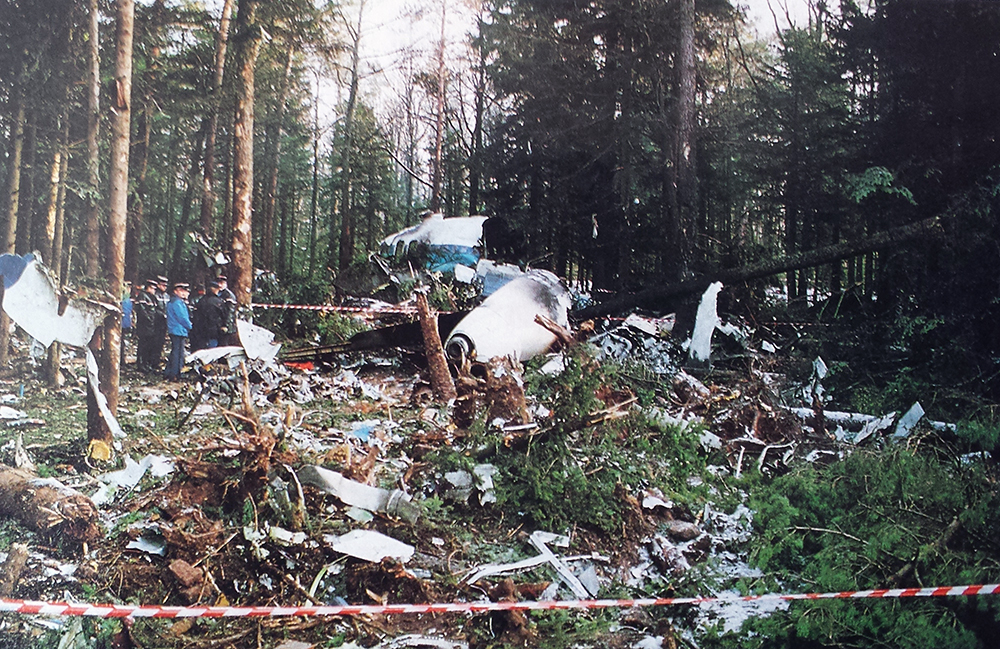
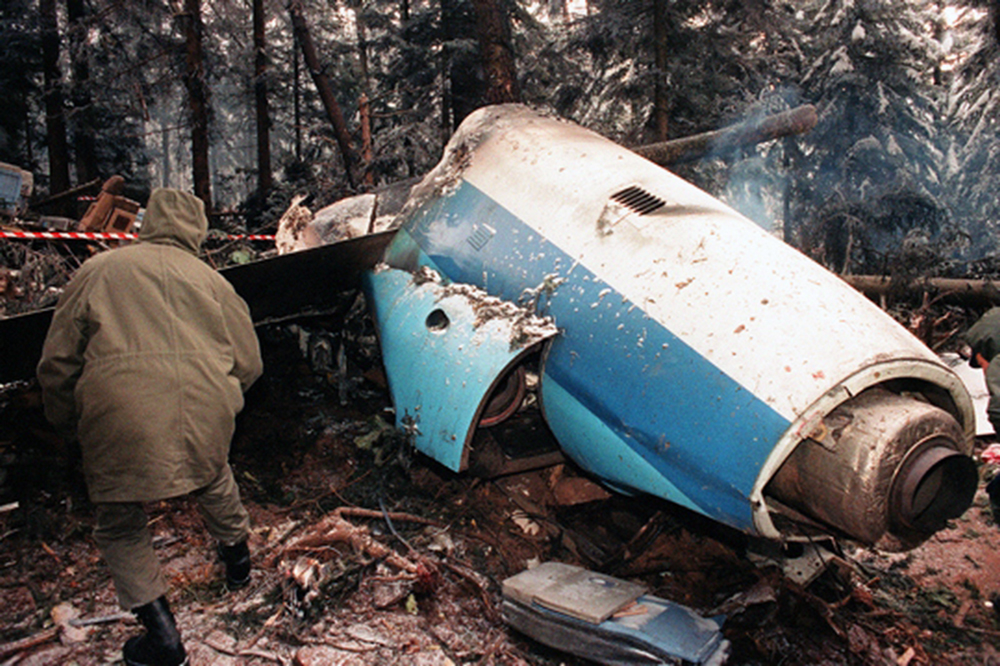



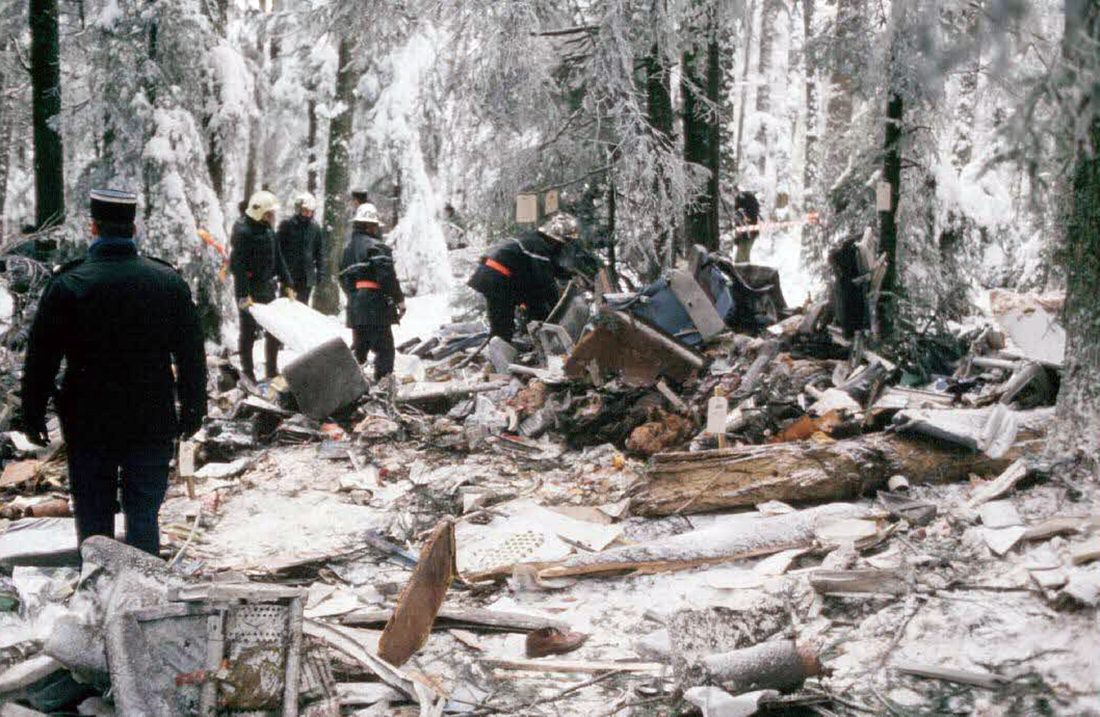
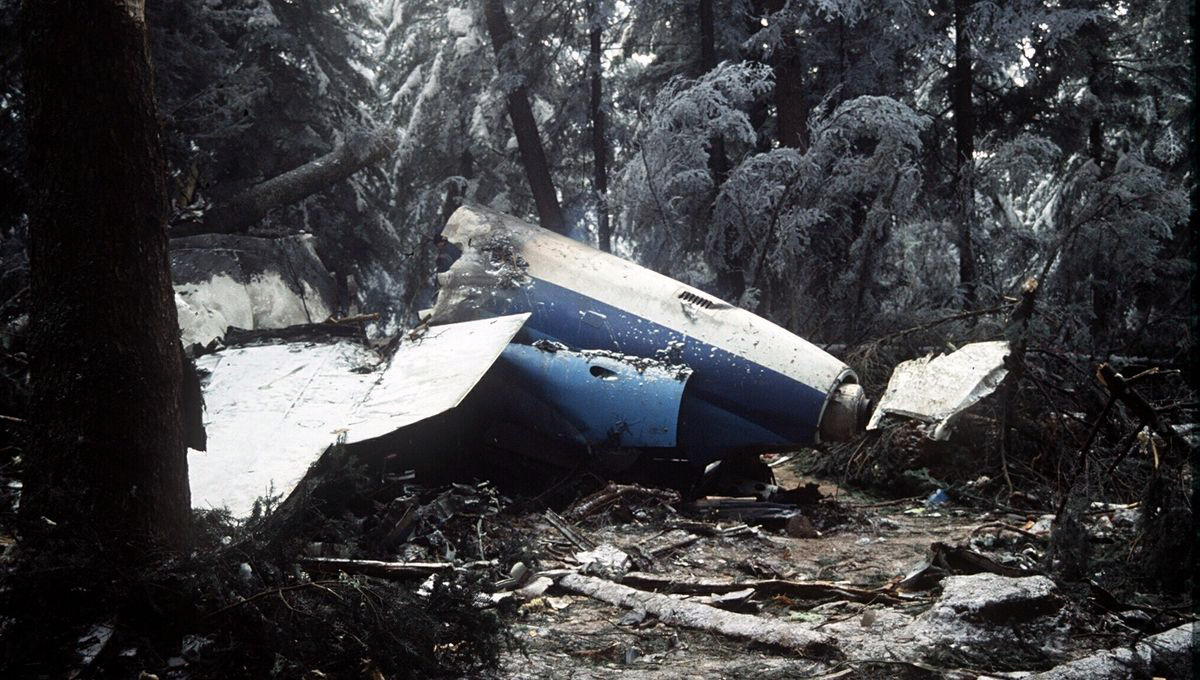





Crash of a Vickers 724 Viscount in Noirétable: 60 killed
Date & Time:
Oct 27, 1972 at 1918 LT
Registration:
F-BMCH
Survivors:
Yes
Schedule:
Lyon – Clermont-Ferrand – Bordeaux
MSN:
50
YOM:
1955
Flight number:
IT696
Crew on board:
5
Crew fatalities:
Pax on board:
63
Pax fatalities:
Other fatalities:
Total fatalities:
60
Aircraft flight hours:
31413
Aircraft flight cycles:
26330
Circumstances:
During a short flight from Lyon to Clermont-Ferrand by night, the crew was briefed about poor weather conditions en route and at destination with storm activity, turbulences, heavy rain falls, icing conditions and low ceiling. The crew was cleared to start an ILS approach to Clermont-Ferrand and received the permission to descend to 3,600 feet. In clouds, the four engine airplane struck trees then crashed inverted on the Pic du Picot (1,100 meters high) located in the Forez Mountain Range, near Noirétable. The wreckage was localized seven hours later in the Faye forest. Eight passengers were evacuated while 60 other occupants were killed.
Probable cause:
According to the investigating committee, the accident was the direct result of a collision with the terrain, which occurred at night in stormy conditions in the vicinity of a cold front, while the aircraft was following a seemingly normal approach procedure but deviated to the east about 30 km. The genesis of the accident has two anomalies. The first consists in the fact that the crew was convinced to be really vertical of Clermont-Ferrand whereas this beacon was, in fact, more than 30 km away. It can only be explained by a frank rotation of the radiocompass whose crew did not detect the aberrant character. It must also be admitted, moreover, that the radiocompass indications subsequently showed consistent variations with the successive positions of the aircraft during the double descent circuit and with the second overflight of the Clermont-Ferrand beacon. The second anomaly is characterized by the announcement of the aircraft flying over the beacon, with more than three minutes ahead of an estimated eight minutes. This difference may have been neglected by the crew because of their reliance on the radiocompass indication. We can also think that this difference went unnoticed by the crew either by forgetting to check the time, or by a reading error, the crew having to cope with a difficult steering because of the turbulence and the presence of an instructor who could also be a factor of concern and distraction at this time. The commission's work has made it possible to rule out the assumption of a pirate transmitter, the erroneous indication of the radiocompass could have come from either a fault in the installation of the on-board antenna system associated with certain conditions of the electric field , or more likely very localized precipitation that accompanied the cold front in the area of the accident and that could constitute a kind of transmitter (series of micro discharges) powerful enough to be during all this phase of flight detected by the radiocompass of the plane while stifling the field of the beacon of Clermont-Ferrand. The interception of the ILS alignment plan probably reinforced the crew's conviction. In addition, it is not impossible that the luminous halo of the city of Thiers, perhaps visible at certain times, could constitute an additional factor of motivation. Although the instructor pilot had the reputation of attaching great importance to a cross-checking of positions, which was possible in particular by the radial of Moulins, it seems that the crew did not do anything about it. The commission ultimately accepts the possibility of an aberrant indication of a radiocompass, but can not explain the reasons which prevented the crew from properly controlling the point from which the descent was started and continued. In conclusion, it is understood that the accident was the consequence of a controlled flight into terrain.
Final Report:

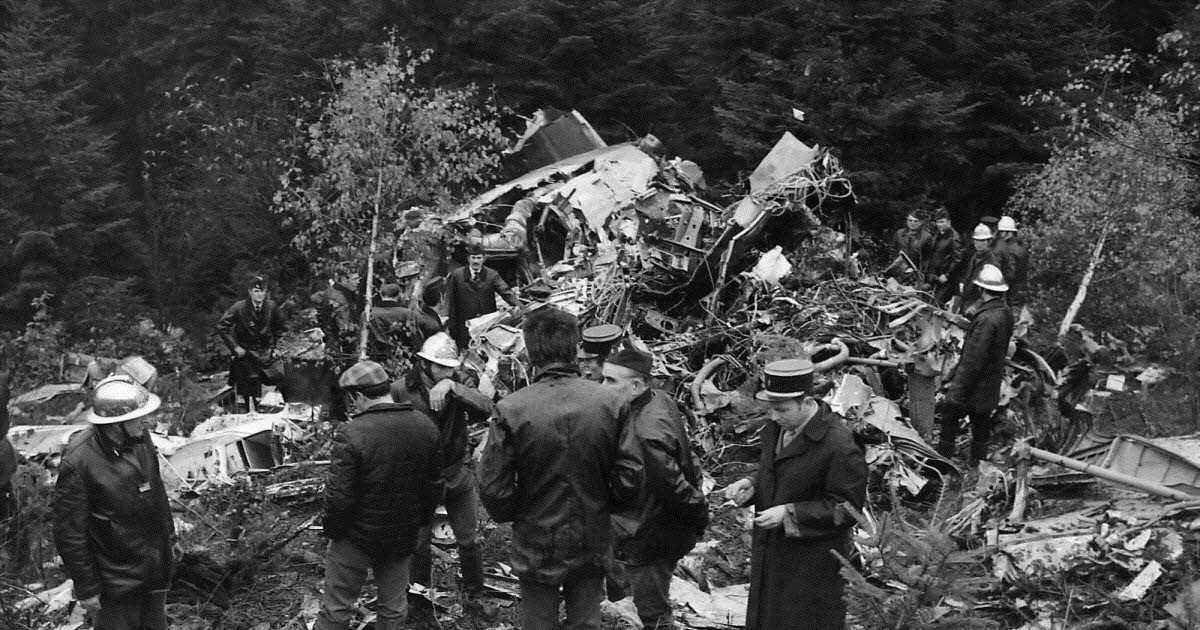



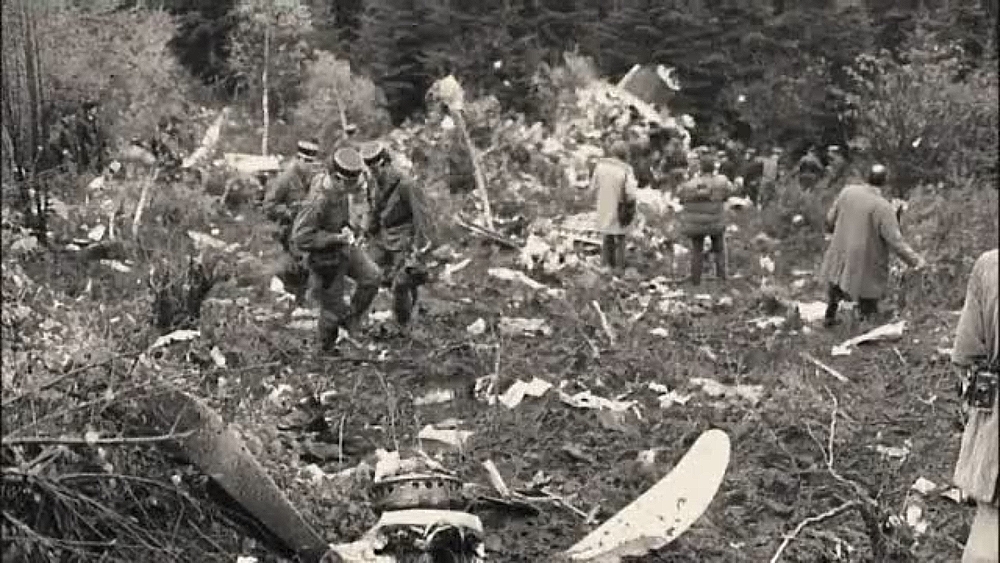



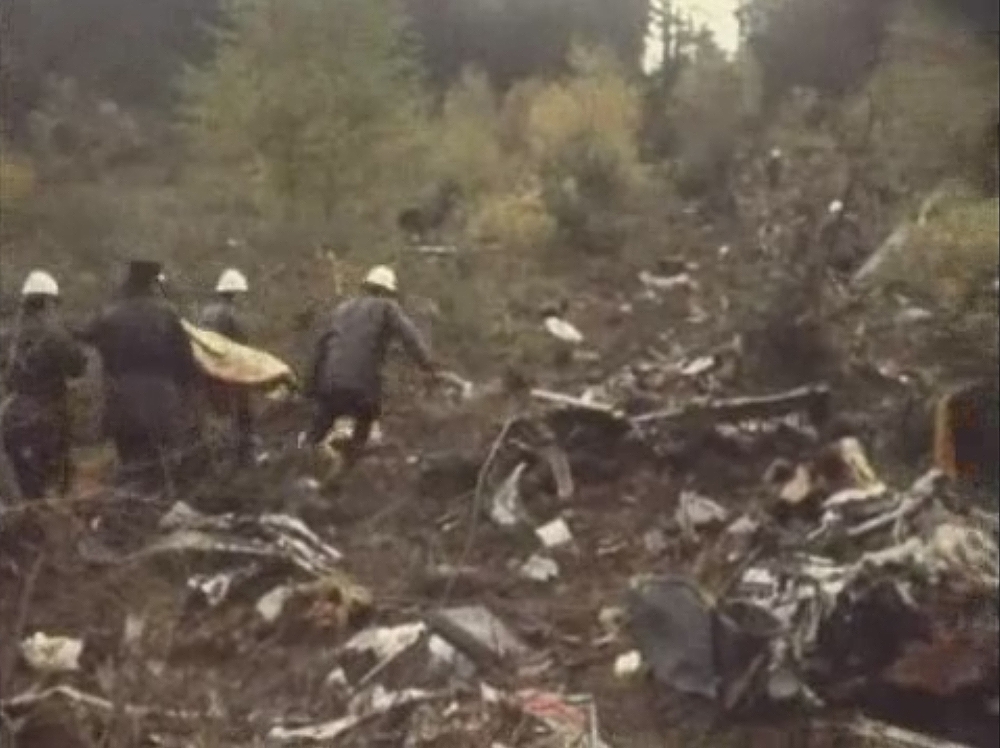




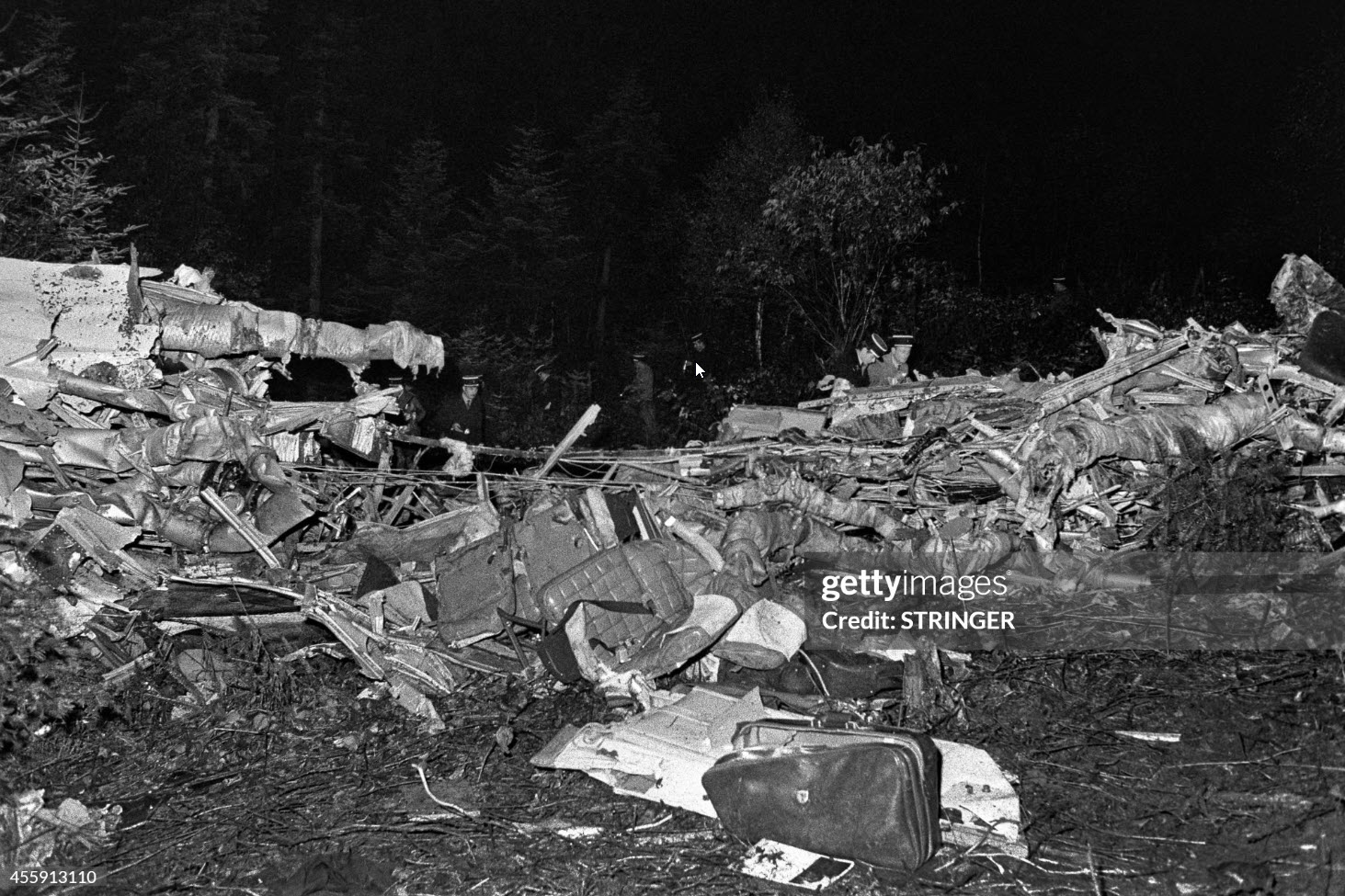

Crash of a Vickers 708 Viscount in Clermont-Ferrand
Date & Time:
Dec 28, 1971
Registration:
F-BOEA
Survivors:
Yes
Schedule:
Clermont Ferrand - Clermont Ferrand
MSN:
12
YOM:
1953
Crew on board:
2
Crew fatalities:
Pax on board:
0
Pax fatalities:
Other fatalities:
Total fatalities:
0
Aircraft flight hours:
25732
Aircraft flight cycles:
21834
Circumstances:
The crew was engaged in a local training flight at Clermont-Ferrand-Aulnat Airport. During the takeoff roll, the instructor voluntarily shut down the engine n°4 to simulate a failure. The pilot-in-command lost control of the airplane that veered off runway to the right and came to rest in a grassy area. While both pilots were uninjured, the aircraft was damaged beyond repair.
Crash of a Vickers 708 Viscount in Tramoyes: 16 killed
Date & Time:
Aug 12, 1963 at 1419 LT
Registration:
F-BGNV
Survivors:
Yes
Schedule:
Lille – Lyon – Nice
MSN:
039
YOM:
1954
Flight number:
IT2611
Crew on board:
4
Crew fatalities:
Pax on board:
12
Pax fatalities:
Other fatalities:
Total fatalities:
16
Captain / Total hours on type:
1125.00
Copilot / Total hours on type:
462
Aircraft flight hours:
12732
Circumstances:
Flight IT 2611 was a scheduled domestic flight from Lille to Nice with an intermediate stop at Lyon. It took off from Lille at 1151 hours GMT, on an IFR flight plan. Estimated flying time between Lille and Lyon was 1 hour 21 min., cruising at flight level 150. Until 1300 hours, when it began its descent, the flight had been normal; at 1309:50, it reported to Marseilles Control that it was above Tramoyes at flight level 40, and was cleared to Lyon Approach, which was contacted at approximately 1310Z. The flight was then in position for a direct approach to runway 17. At this point Lyon Control having a Caravelle ready to take off asked the aircraft to hold momentarily over Tramoyes at flight level 30. After having first agreed, the flight reported that it was in a severe storm and requested permission to descend below flight level 25, at 1313 hours. Lyon then cleared the flight for a straight-in approach to runway 17. This was acknowledged by the aircraft, Subsequent calls from Lyon Control were not replied. The flight was seen by witnesses in the heart of a storm flying very low in an easterly direction around 1320 hours. At 1326 the aircraft was not visible on Satolas Control radar. It was subsequently found that the aircraft had hit trees, the roof of a farmhouse and a telephone pole before crashing into a field, 15 km from Lyon/Bron airport, at an altitude of 300 m (100 metres higher than the airport) at approximately 1319 hours. Four occupants, among them a crew member, were seriously injured while 12 other occupants were killed. Few hours later, three of the survivors died from their injuries and a little girl was the only survivor. In the farmhouse, a boy was seriously injured while a second one was killed.
Crew:
Georges Valencia, pilot,
Guy Cleret-Langavant, copilot,
Christiane Souleil, stewardess,
Liliane Perois, stewardess.
Crew:
Georges Valencia, pilot,
Guy Cleret-Langavant, copilot,
Christiane Souleil, stewardess,
Liliane Perois, stewardess.
Probable cause:
The Board considered:
- that the aircraft would probably have landed safely if it had been able to carry through the approach it had initiated;
- that the accident resulted from the exceptionally bad weather conditions in the area where the aircraft was holding at the request of Lyon Approach.
The Board did not rule out the possibility of a flash of lightning dazzling the crew and causing temporary blindness or appreciably incapacitating both crew members.
- that the aircraft would probably have landed safely if it had been able to carry through the approach it had initiated;
- that the accident resulted from the exceptionally bad weather conditions in the area where the aircraft was holding at the request of Lyon Approach.
The Board did not rule out the possibility of a flash of lightning dazzling the crew and causing temporary blindness or appreciably incapacitating both crew members.
Final Report:


